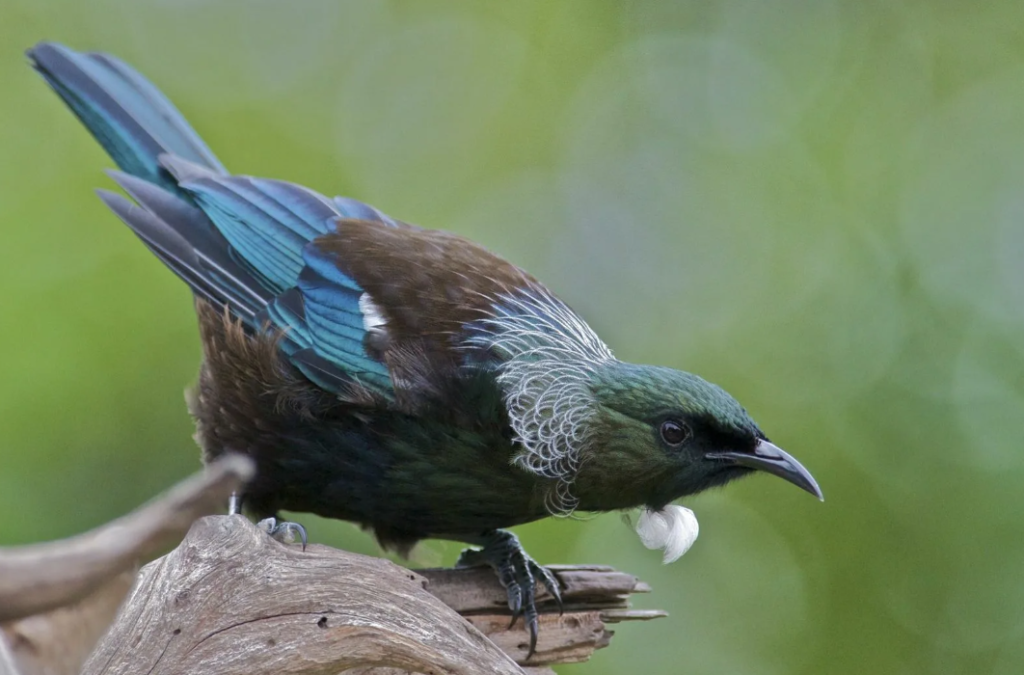Introducing the Prosthemadera novaeseelandiae, or better known as the Tui, a remarkable indigenous bird that inhabits the stunning landscapes of New Zealand. Join me as we delve into the captivating qualities that have made this bird an adored emblem of the country.

An Enchanting Display of Feathers:
The Tui is a bird species that is recognized for its stunning, glistening feathers. Its glossy dark plumage, mixed with metallic blue-green hues and bright white neck plumes, make the Tui resemble a work of art come to life.
A Maestro of Sound:
The Tui is not only visually mesmerizing, but it also possesses an enchanting and unique vocal range. Its melodies are created from a combination of various tones, sounds, and gurgles, and it can even mimic other bird species. The Tui’s captivating cries can be heard echoing throughout the forests of New Zealand, adding a distinctive musical note to the country’s natural symphony.

Staying Fit and Multitasking:
Tuis are essential for pollination, particularly for the native flowering plants, thanks to their nectarivorous nature. Additionally, these birds have mastered the art of catching flying insects, proving their versatility as omnivorous eaters and multitaskers.
Masters of the Sky:
Watching a Tui fly is a sight to behold as they flaunt their aerial skills with impressive acrobatics. Their graceful dives and deft maneuvers showcase their agility and flair for the dramatic.

Cultural Significance:
The Tui bird holds a significant place in Maori culture, symbolizing energy, happiness, and a deep connection with the environment. Its cultural value is evident in various forms of art, music, and stories that reflect the bird’s importance to the indigenous community.
Challenges and Preservation:
Despite being a beloved species representing New Zealand’s biodiversity, the Tui faces challenges from habitat loss and invasive predators. Therefore, it is crucial to take conservation measures to safeguard their survival and preserve their vital role in the ecosystem.

